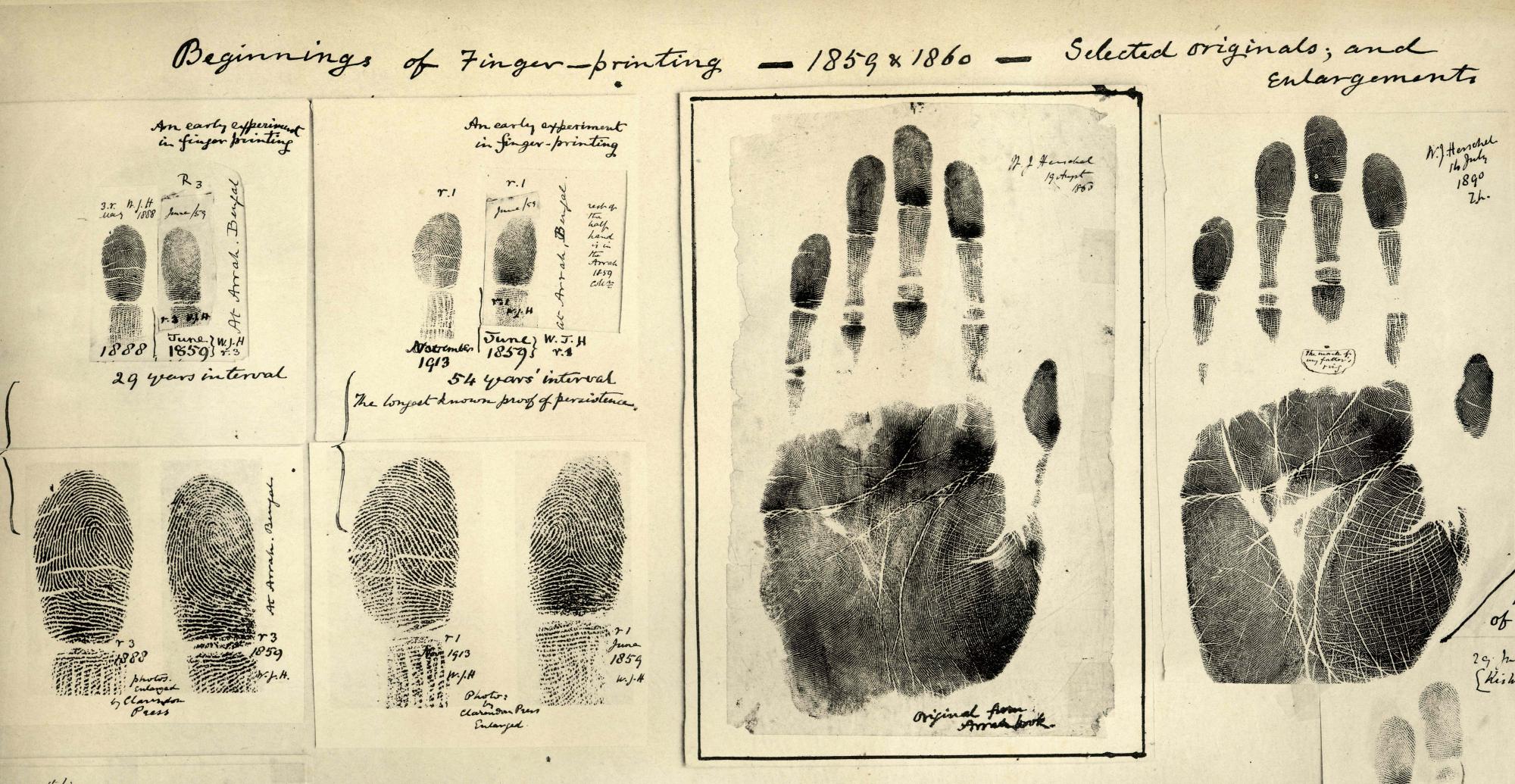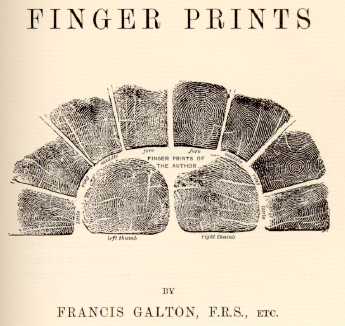Our inspiring invention this week is fingerprinting. It seems so ordinary to us now, we're fingerprinted at birth in the hospital. It's a process that has solved crimes, improved the quality of life in our cities albeit indirectly, and even proven people innocent. But that wasn't always the case. The "birth" of fingerprinting as a forensic, scientific process took many years and the milestones crossed spanned several nations. When I began condensing this history done to its core milestones, I was struck by how inter-generational and international this process was and is. Here's a timeline that details how we got to this important method:
- 1665 (Italy) Dr. Marcello Malphigi discovers the existence of patterns of ridges on the fingertips.
- 1684 (England) Dr. Nehemiah Grew publishes the 1st paper describing Dr. Malphigi's earlier discovery, though Dr. Grew discovers that the ridge patterns also extend to the palms.
- 1788 (Germany) Johann Christoph Andreas Mayer determines fingerprints are unique to each individual.
- 1858 (India) Sir William James Herschel begins fingerprinting as a means of identification to prevent fraud on contracts, deeds, pension collection, and even at prisoners' sentencing.

- 1863 (France) Paul-Jean Coulier discovers that iodine fumes reveal fingerprints on paper.
- 1880 (Scotland) Dr. Henry Faulds publishes the 1st paper detailing a method of recording fingerprints in ink as a process of later identification. (Dr. Faulds is also the first person to lift fingerprints off of an object!)
- 1886 (Scotland) Dr. Faulds suggests the method of fingerprinting to the London Metropolitan Police, who dismiss it. This dismissal leads Dr. Faulds to seek advice from Charles Darwin. Too ill to work on developing a perfected method of fingerprinting, Darwin recommends the project to his cousin, Francis Galton.
Galton takes up the project and publishes a detailed forensic scientific study called Finger Prints.

- 1892 (Argentina) Juan Vuetich, after reading Galton's Finger Prints, sets up the 1st fingerprinting bureau in the world!
- 1901 (Scotland & England) Both Scotland Yard & The Metropolitan Police in London add a fingerprinting bureau.
- 1902 (United States) In New York, there was the first case of identification, arrest & conviction of a murder based on fingerprint evidence.
Sources & For More Information:
- Cyril John Polson, "Finger Prints & Finger Printing: An Historical Study," Journal of Criminal Law & Criminology, vol. 41, Issue 5, Article 16.
- For more on the controversy of the history of fingerprinting, for Galton vs. Faulds , for Herschel vs. Haque & Bose, and for Imperialism and fingerprinting.
